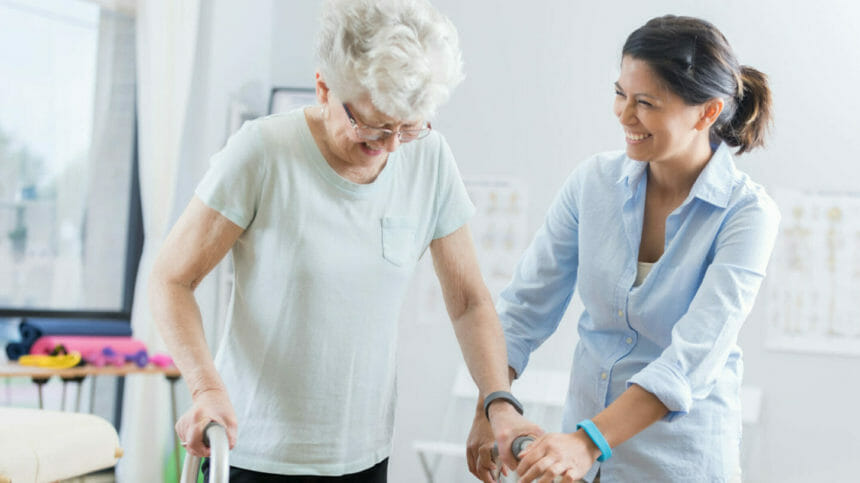
When planning post-acute rehabilitation for patients who have had a hip fracture, clinicians should be aware that the patient’s level of social interaction may influence the success of their recovery, researchers say.
“It is important that health professionals consider that living alone may be associated with poorer functioning among older men, but not necessarily among women, and that social interaction is likely to be an important component of function recovery for both sexes,” Saionara Câmara, PhD, and colleagues wrote in a study published May 12 in the Journal of the American Geriatrics Society.
Camara, of the Federal University of Rio Grande do Norte in Brazil and colleagues performed a cohort study as part of the Baltimore Hip Studies seventh cohort.
They assessed 168 male and 171 female patients shortly after hospitalization from hip fracture at two, six and 12 months post-admission. At all visits, investigators collected information about the patients’ living arrangements and family interactions. The patients also were screened for physical performance abilities using the Short Physical Performance Battery (SPPB).
Men show signs of social frailty
Men had worse physical performance scores over the one-year follow-up period when living alone, while higher social interaction levels were tied to better physical performance scores for both men and women. In addition, visiting with friends was significantly linked to better function in male participants, and visiting with children or siblings was associated with worse function among females.
Social frailty may mean patients are either at risk of losing, or having lost, resources to fulfill their basic social needs, such as affection, behavioral confirmation and status, the researchers explained. It may mean not only the absence of close family members, but also the absence of social activities, relationships with others, social participation and self-management abilities.
Men are particularly vulnerable to these risks and in the current study had worse health status than women at baseline, with more chronic conditions and worse cognitive status, the researchers reported.
“Screening for social isolation and/or integration and interventions that promote social integration may optimize functional recovery for hip fracture survivors,” Camara and colleagues concluded.
Related articles:
Hip fracture readmissions lower when nursing home in sync with hospital staff: study
Fewer hip fracture patients receive opioids after stay in SNF than IRF: study
Psychological resilience boosts walking abilities after hip fracture: study
Hip protectors and mobility aids reduce fractures, video analysis shows




